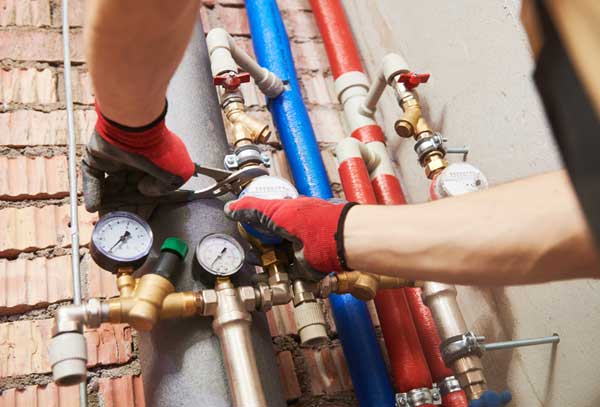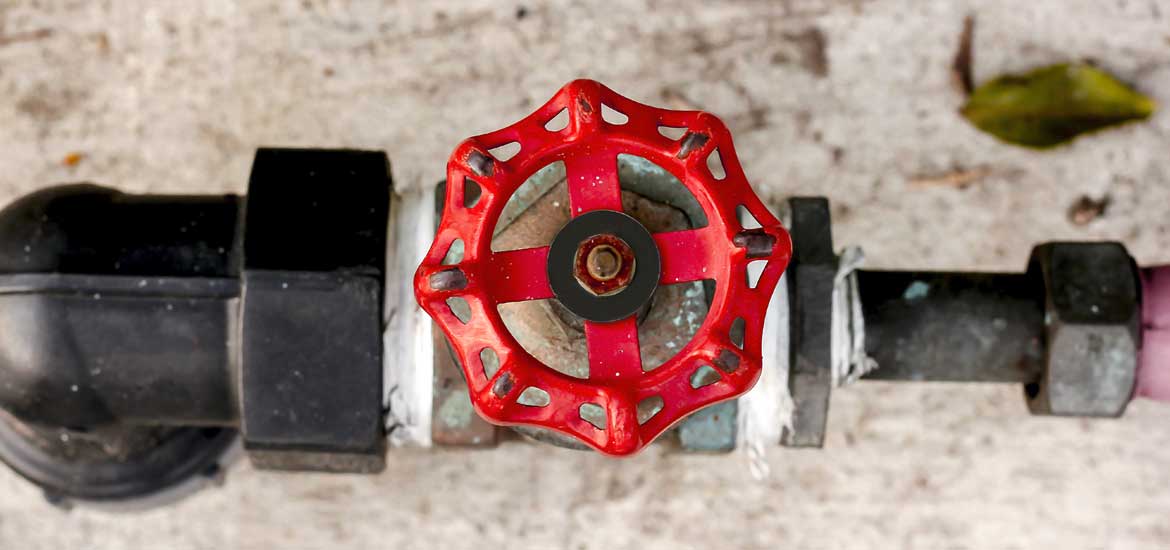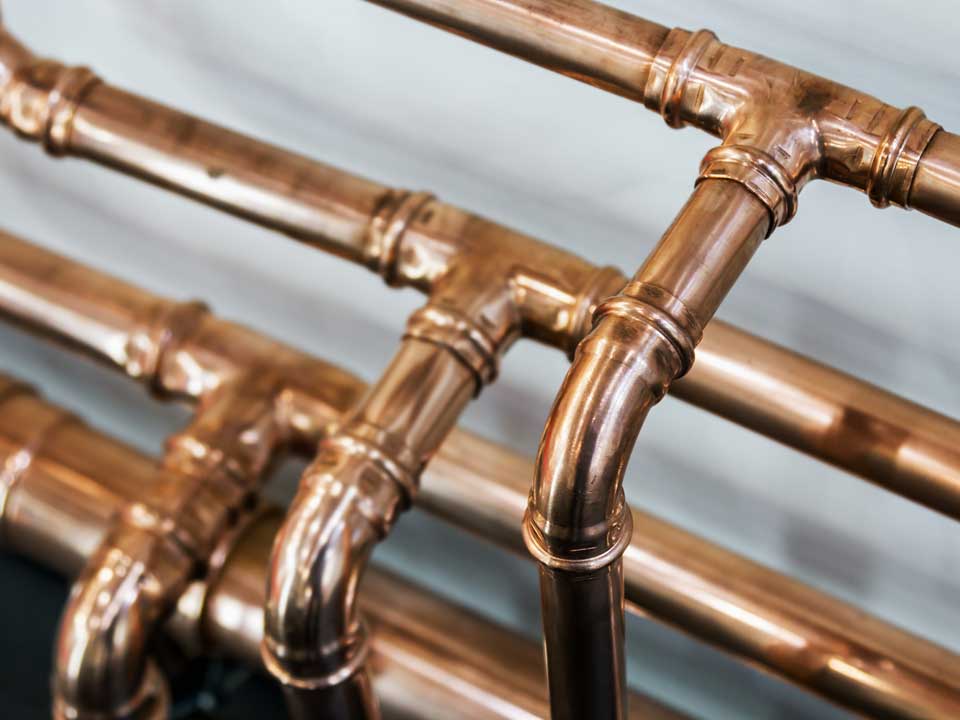Here’s a Guide on How to Bleed Air Out of Your Home’s Plumbing

You wake up one morning and proceed to the kitchen sink to fill your coffee pot as usual. You turn the handle on the faucet, but a burst of air comes out instead of water. It could also be accompanied by loud gurgling and prolonged vibrating noises, like those used in horror movies. Fortunately, an occasionally sputtering faucet, while annoying, is not indicative of a significant problem.
There are several reasons you may get that sputtering, bubbly, foamy water when you turn on the tap. While most of them are normal, others could be a cause for concern. Before we show you how to get rid of the frustrating spluttering water and repetitive knocking sounds, let’s have a look at how air may get into your pipes in the first place.
Table of Contents
- How Does Air Get into Water Pipes?
- What Does Air in Water Pipes Sound Like?
- What if Only Your Hot Water Lines are Sputtering?
- Problems Caused By Air in Your Pipes
- Why is it Important to Remove the Air from Water Pipes?
- Call a Plumbing Expert at Gallegos Plumbing
- Steps for Getting Rid of Air in Water Pipes
- 1. Turn Off Your Main Water Supply Valve
- 2. Open all the faucets in your house.
- 3. Wait for All Faucets to Run Dry and Flush Toilets
- 4. Turn the Main Water Supply Back On
- 5. Turn All Faucets Off Again in the Correct Order
How Does Air Get into Water Pipes?
There are several ways air may make it into your plumbing system.
Air can make it into your water pipes after a temporary interruption in water service. Have you recently had the municipality shut off your water to add some new plumbing? Air has probably been introduced into the system when it was depressurized and drained. Maintenance work on your neighborhood’s water lines may also introduce air into your system.
When you turn your faucet and the pump sends water up to your pipes, it will push this air bubble out your tap. It will cause hissing, spitting, and sputtering before water starts flowing normally.
Some water treatment equipment needs air to work properly. If you recently installed a Birm system for red water or an iron Catalytic Carbon system for sulfur odor, it is not uncommon to have air in your lines. Micronizers may also lead to the presence of air in your plumbing system. Do you have any questions about what kind of system you have? Do not hesitate to contact Gallegos Plumbing! It is our pleasure to go over your plumbing equipment with you.
What Does Air in Water Pipes Sound Like?
Noisy water pipes induced by trapped air will sound like vibrating and rapid ticking. While the sound can be loud and annoying, you can quiet those noisy pipes by cranking up the water’s velocity in the lines for a short time.
What if Only Your Hot Water Lines are Sputtering?
So, what if all your hot water lines are sputtering while your cold water lines are not? Why only the hot water lines, and what should you do?
If only your hot water lines are sputtering, you need to focus on bleeding your hot water tank specifically. Nowadays, all hot water tanks have a flushing mechanism to empty the tank. You need to follow a few steps, and the tank manual clearly outlines them. Have a look at that manual before you begin, and don’t hesitate to call our friendly team at Gallegos Plumbing if you encounter any problems.

Problems Caused By Air in Your Pipes
It is improbable that air in the pipes will damage a home’s plumbing. It’s only air, after all. People usually confuse the term “water hammer” with air in the plumbing lines.
Water hammer situations usually occur when there is a sudden increase of water in the pipes; then, the water suddenly changes directions after someone shuts off a faucet or water valve too quickly. If you turn a tap on, then you quickly turn it off when the pressure in the pipes is too high, the water gets forced backward. High water pressure in the plumbing system can cause damage to your home’s water lines.
The ideal water pressure for a home’s plumbing system ranges from 55 to 65 pounds per square inch. If your pressure gauge indicates that your home’s water pressure is more than 65 psi, contact Gallegos Plumbing, and we’ll install a pressure regulator on your home’s main water supply.
Why is it Important to Remove the Air from Water Pipes?

Now that we know that trapped air in water pipes may not cause significant damage to your plumbing, why should we get rid of air in water pipes anyway?
We should eliminate trapped air in water pipes because trapped air can cause several irritating problems such as:
- Spluttering faucets or inconsistent output
- Reduced water pressure, which results in weaker flow, especially noticeable in showers
- Excessive noise coming from your walls
- Rusting and corrosion in extreme cases
- And more!
While trapped air is harmless to your plumbing system, it is not something you want to live with.
The pleasant thing, though, is that you can try to remove air from water pipes yourself; it’s something any homeowner can do in just a few minutes. Here’s how you can get rid of trapped air in your home’s water pipes.
Schedule a Visit
Steps for Getting Rid of Air in Water Pipes
If you feel confident that you may be able to bleed air out of your home’s plumbing yourself, please follow our simple step-by-step guide below! If you still want to ensure an expert checks your plumbing, call Gallegos Plumbing, where trapped air problems are dealt with professionally.
Remove air from your pipes in five easy steps:
1. Turn Off Your Main Water Supply Valve
A pipe makes its way from the water main serving your neighborhood into your home, bringing fresh water.
The first step in removing trapped air from your plumbing is locating the water meter and valve found outside your house or if your house has one, inside your basement. Proceed to shut down the mains water pipe by turning off the water supply shutoff valve as far as you can. By doing so, no additional water will enter your plumbing pipes, which allows you to drain the water that remains in your lines.
So, you can’t locate your main water valve or aren’t able to turn it off? Please do not force it. Instead, call Gallegos Plumbing for professional assistance.
2. Open all the faucets in your house.
Move through your house and twist all of your hot and cold water faucets, so they run water.
Work your way, beginning with the faucet closest to the main water supply valve. It would be best to start with the tap closest to the main water supply valve and slowly make your way to the farthest faucet. Ensure that you don’t turn the pressure too high. The water has to be free-flowing enough to escape, though.
Besides your faucets, you should drain anything that uses water in your house. It includes your dishwasher, shower, and washing machine too.
3. Wait for All Faucets to Run Dry and Flush Toilets
Wait for all faucets to stop running. The waiting time depends entirely on how much water your house was holding before turning the main valve off. Once all your faucets stop running, proceed to flush all toilets in your home. Keep flushing until there’s no more water.
4. Turn the Main Water Supply Back On
With all your faucets still turned on, head back to your water valve and switch the main water valve back on. Let the water flow for between 10 to 15 minutes or until it begins to flow normally at every faucet, without bangs or sputters.
5. Turn All Faucets Off Again in the Correct Order
Once the water is running smoothly, it is now time to turn off all faucets. Just as you turned all of your faucets on in a particular order, you need to turn them off in reverse order, starting with the last faucet you opened, the one that’s farthest away from the main water valve.
When you get to a toilet, turn off the faucet closest to the main valve first before flushing the toilet. You’ll then have to wait about two minutes before closing the next tap. Repeat this for all toilets in your house.
Continue turning off faucets and fixtures in reverse order until you get back to the first faucet you opened. If you followed each step correctly, you should have eliminated all the air pockets. If the problem persists, you will require specialized help to cure the problem. Don’t hesitate to contact our professionals at Gallegos Plumbing to take a look.
Call a Plumbing Expert at Gallegos Plumbing
If you can hear loud thumps or bangs followed by no other noise, you are most likely dealing with a water hammer, not trapped air. Water hammer is a much more serious plumbing issue that can cause a lot of damage and will require an expert’s opinion
To diagnose the problem, call Professional Gallegos Plumbing at (805) 243-2622. We will help you resolve the banging and vibrating on your pipes, address air in your hot water tank, and restore consistent water flow to your fixtures.
Gallegos Plumbing also provides a full spectrum of cost-effective plumbing solutions for our Ventura County neighbors and surrounding communities in Southern California. Please have a look at our plumbing services here.

